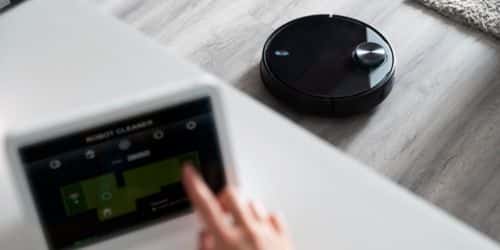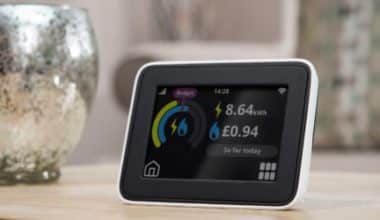When most people envision a smart home, it’s often centered around the idea of convenience – lights that turn on with a voice command, music that follows you from room to room, or a robot vacuum tirelessly keeping your floors tidy. While these features certainly add a touch of futuristic cool, the true power of a smart home lies in its ability to offer much more than mere gadgets. By strategically incorporating specialized sensors throughout your living space, you create a network that actively works to safeguard your home, protect your family’s health, and even optimize energy consumption.
Gas Detection – Peace of Mind for ALL Homes
Gas leaks are an insidious threat. Often odorless and invisible, they can be deadly. This is why Dwyer gas sensors are an essential component for any truly safe smart home. Known for their accuracy and reliability, these sensors tirelessly monitor the air for dangerous gases like carbon monoxide (CO), natural gas, and propane.
The misconception that gas detection is only vital for homes with gas appliances is a dangerous one. Carbon monoxide can infiltrate your living space from a variety of sources – a malfunctioning generator, a vehicle left idling in an attached garage, even a faulty fireplace flue.
The advantage of integrating these sensors into a smart home system goes beyond a simple alarm sounding once dangerously high levels are reached. Connected to your smart hub, they’ll send alerts directly to your phone at the earliest sign of a potential leak. This early warning empowers you to take immediate action: evacuate your home, ventilate the space, and call in professionals to pinpoint the source of the problem. The most sophisticated smart systems even incorporate gas shut-off valves. Upon detecting a leak, these valves automatically cut off the gas supply to your furnace or other appliances, preventing the situation from escalating into a full-blown disaster.
Precision Temperature Control for Comfort and Savings
If inconsistent temperatures throughout your home are a constant source of frustration, understanding the limitations of basic smart thermostats is important. Many rely on a single sensor, often in a central location, for their temperature readings. This can lead to inaccurate readings and inefficient heating/cooling. ACI sensors offer a solution for precision temperature monitoring.
These sensors provide highly accurate, room-by-room temperature readings. Additionally, they often log this data over time. This granular temperature information has several advantages:
- Zoned HVAC Optimization: If you have a zoned HVAC system, ACI sensors provide the room-by-room data it needs to truly maximize efficiency. This eliminates hot/cold spots, ensuring each zone is only heated or cooled as needed.
- Insight into Problem Areas: Temperature data logging by ACI sensors can reveal drafts, poorly insulated rooms, or inefficient windows. Addressing these issues leads to greater overall comfort.
- Potential Energy Savings: While not a guarantee, more targeted heating/cooling made possible by ACI sensor data often translates to a reduction in energy bills.
It’s important to note that ACI sensors themselves don’t directly control your HVAC. They are the data gatherers that empower smart thermostats and zoned systems to make more informed decisions about your home’s climate control.
HVAC Gets Smarter, Not Just Colder
Let’s break the notion that smart home HVAC upgrades are solely about cranking the A/C from your phone. While that’s certainly convenient, modern systems like Siemens thermostats offer far more sophisticated control and tangible benefits that make your home both more comfortable and efficient.
These thermostats go beyond basic temperature settings. Some models incorporate multiple sensors or integrate with separate room sensors for data collection. This information is then used to optimize zoned heating and cooling systems. True zoned systems divide your home into multiple areas, each with its own independent temperature control. Gone are the days of blasting the heat throughout the entire house just to warm up a chilly guest room.
The energy savings potential with this setup is significant. By ensuring only the rooms currently in use are actively heated or cooled, you avoid wasted energy. This precision control not only reduces your utility bills, but also lessens the overall strain on your HVAC system.
Of course, the true benefit of a smart, zoned HVAC system lies in the enhanced comfort it provides. By maintaining consistent, customized temperatures in each zone of your home, those frustrating hot and cold spots become a thing of the past. Whether it’s a home office that always runs cold or a sun-drenched living room prone to overheating, a smart HVAC system adapts to deliver the perfect temperature wherever you are in your house.
Conclusion
Throughout this exploration of smart home sensors, we’ve seen how these devices offer benefits far beyond the novelty of dimming lights with your voice. Finding the optimal setup means taking the time to research sensor compatibility. Luckily, there are comprehensive guides available that explain which sensors integrate seamlessly with the major smart home ecosystems like SmartThings, Apple HomeKit, or others. This upfront research ensures your chosen sensors not only provide the monitoring you need, but that they’ll work in concert with the systems you may already have in place.
Taking this upgrade seriously often means seeking out qualified professionals specializing in smart home installation. Seek out installers with a proven focus on both safety and efficiency enhancements. A reputable installer will help you strategize sensor placement, integrate them flawlessly into your existing smart network, and offer guidance on which upgrades will truly make a difference in your specific home.






